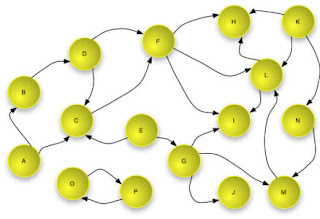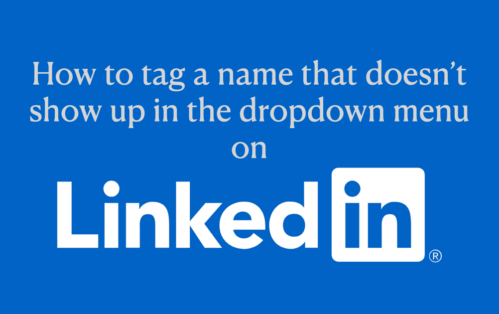 At the NetExplorateur Forum 2009, I attended the Obama_online presentation by Tom Gensemer, Managing Partner at Blue State Digital (BSD), who explained the inner workings behind President Obama’s online campaign. Gensemer, who is not one to hide his partiality, gave lots of insights as to how to make an online political campaign effective — insights that carry over well into the business world.
At the NetExplorateur Forum 2009, I attended the Obama_online presentation by Tom Gensemer, Managing Partner at Blue State Digital (BSD), who explained the inner workings behind President Obama’s online campaign. Gensemer, who is not one to hide his partiality, gave lots of insights as to how to make an online political campaign effective — insights that carry over well into the business world.
First, here are some numbers about Obama’s “online” campaign:
- They achieved a database of 13.5 million people each of whom subscribed and opted-in for the Obama campaign.
- 7,000 unique email messages were created and sent out, populating the 1.2 billion email messages that were sent out between February 2007 and November 2008.
- There were 3.2 million donors who gave, on average, more than twice an average of around $80 (some $500 million were raised online).
- Around 2 million text messages were sent out.
- They motivated 2 million social networking participants and created more than 200,000 events across the country.
For all the President 2.0-speak, this campaign excelled more in its presence online (more like a 1.0 approach) than for being a truly web 2.0 interactive campaign. The messages were evidently very controlled and, yet, by being touch with the communities, there was plenty of interaction. By mixing beautifully the on- and offline communication, the Obama team clearly mastered the art of feeling interactive via their effective grassroots mobilisation.
So, some guidelines to retain for creating your own campaign, political or not:
- The average email message was less than 250 words long.
- Each message was designed to provide a call to action of some sort (sign up, sales, contribution, affiliation…). i.e. no gratuitous communication. Every time, it was relevant and engaging.
- The email remains the killer application.
- There is no such thing as too many emails as long as the emails are not unwanted!
- If you fake it, they will notice it. Be authentic.
- If you promise, follow through.
- Ask the addressee something (an action) with a clear and easy request.
- Newsletters are dead. “When was the last time you opened and read a newsletter,” Tom chided us.
- Text messages are more cumbersome to create in large scale and they do not work for raising funds.
In order for an online campaign to be successful, there are some basics that need to be understood by top management.
- Make the online campaign fully integrated into the organisation: the online team and its activites must be part a the whole team — I think of the sales team in particular.
- Invest in staff, not the tools — not the easiest of Tom’s recommendations in today’s climate.
- Listen and respond to the community needs. The Obama campaign had as a principle to get back to any sign up within 3 to 5 days with a telephone call or visit, thereby bringing online off line.
- Test, test, and re-test. Not just the technological testing, but test on smaller markets to check the tone, the message and the uptake.
 In a sidebar conversation with Tom, I was able to glean some insights as to how they managed to gain the budget for their activities. The first point was that the campaign already had some money which made it a little easier. But, the way they won the bid (they learned about it just 10 days before the campaign began in Feb 2007) and the way the budgeting progressed was by setting bite size measurable objectives. At the outset, the goal setting was all about acquiring emails (always with the mantra of linking each communication with an action…). Thereafter, the number crunching revolved around the number of email addresses that remained “live”, the number of people that contributed, responded or acted on one or other request. Blue State Digital clearly have a very good and immediate metrics system.
In a sidebar conversation with Tom, I was able to glean some insights as to how they managed to gain the budget for their activities. The first point was that the campaign already had some money which made it a little easier. But, the way they won the bid (they learned about it just 10 days before the campaign began in Feb 2007) and the way the budgeting progressed was by setting bite size measurable objectives. At the outset, the goal setting was all about acquiring emails (always with the mantra of linking each communication with an action…). Thereafter, the number crunching revolved around the number of email addresses that remained “live”, the number of people that contributed, responded or acted on one or other request. Blue State Digital clearly have a very good and immediate metrics system.
For me, my biggest takeaways from Tom’s presentation were that the success of the campaign was brought out by these two fundamental considerations:
- Obama was and is a committed community builder offline; whatever strategy employed online was intimately related to the offline approach. The leadership set a consistent tone.
- The success of the online approach benefited from groundwork done via the prior campaign with Howard Dean (2004), helping to break into the political infrastructure. I.e. An online campaign cannot be miraculously built overnight.
The revelation in all this? Business can learn from politics. Whereas I think that business principles are gravely missing from political processes, the way that BSD and Obama ran this campaign (call it “integrated sales & marketing”) is certainly a case study for businesses. For companies that are not as interested in totally letting go, there are still ways to involve and engage the consumer without succumbing to too much web 2.0 freak speak. The message was controlled, yet it looked and felt legitimately inclusive. Interesting, no?
You can read more about the Obama case study on the BSD website here.











There are helpful insights. It’s amazing how much money he raised online.